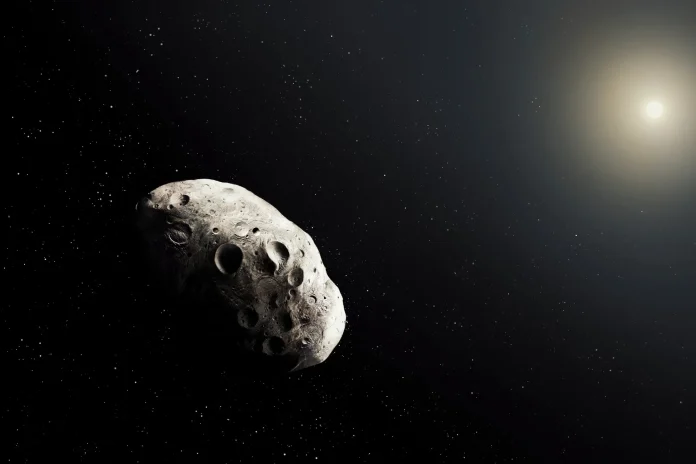For those interested in the history of our planetary neighbours, a new finding has provided insight into the origins of the Earth’s second moon. Though not strictly a moon, this recently discovered celestial body, a small asteroid named Kamo’oalewa, does unusually orbit Earth. The moon is said to be Kamo’oalewa’s birthplace, and scientists think they have solved the puzzle thanks to computer modelling!
What is Earth’s Second Moon?
Small near-Earth asteroid (NEA) Kamo’oalewa, meaning “oscillating celestial object” in Hawaiian, was found in 2016 by the Pan-STARRS telescope array in Hawaii. It is around the exact height of the Statue of Liberty, measuring only 130 to 330 feet (40 to 100 meters) in diameter. Kamo’oalewa displays an unusual orbital dance with Earth without being a genuine moon. It appears to be orbiting Earth because its route echoes Earth’s in a 1:1 ratio as it revolves around the Sun. A further level of mystery surrounds the dynamics of our solar system, with Kamo’oalewa being classified as a “quasi-satellite”.
Did you know? The Main Asteroid Belt, a vast region of stony debris between Mars and Jupiter, is generally considered the source of NEAs.
Also! Newly Discovered Solar System Holds Answer to Our Solar System
What is the Colossal Giordano Bruno?
A new study published in Nature Astronomy points to a lunar origin for Kamo’oalewa. Using computer simulations, researchers traced the asteroid’s journey back to a specific spot on the moon: the colossal Giordano Bruno crater. With a width of 14 miles (22 kilometres), this crater is thought to be the youngest enormous crater on the moon’s surface. It was most likely produced between 1 and 10 million years ago by a much more significant asteroid impact.
According to the experts, a sizable amount of lunar material was thrown into space by the massive impact that created the Giordano Bruno crater. A small amount of the expelled material came together to form Kamo’oalewa, which settled in its current orbit around Earth.
This discovery clarifies Kamo’oalewa’s origins and strengthens the connection between Earth and its Moon. It suggests a dynamic past where material exchanged between these celestial bodies could play a role in both evolution.
Unraveling the Mysteries of the Solar System
Kamo’oalewa, Earth’s supposed second moon’s unique story, is a testament to the ongoing exploration of our solar system. As we refine our observational techniques and computer modelling capabilities, we can expect to uncover more hidden relationships and solve the mysteries surrounding the formation and evolution of celestial bodies. This discovery serves as a reminder that even in our seemingly familiar cosmic neighbourhood, fascinating secrets are still waiting to be revealed.
Check! ESA’s Juice Mission to Jupiter Unlocks Unseen Secrets



